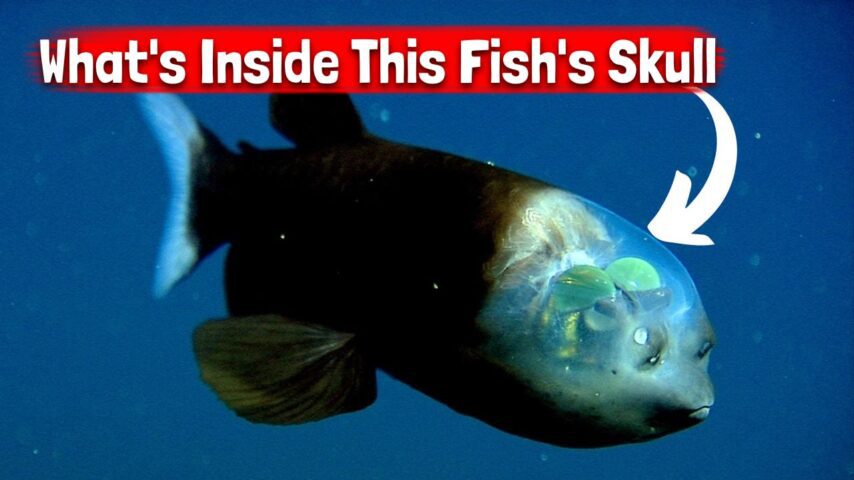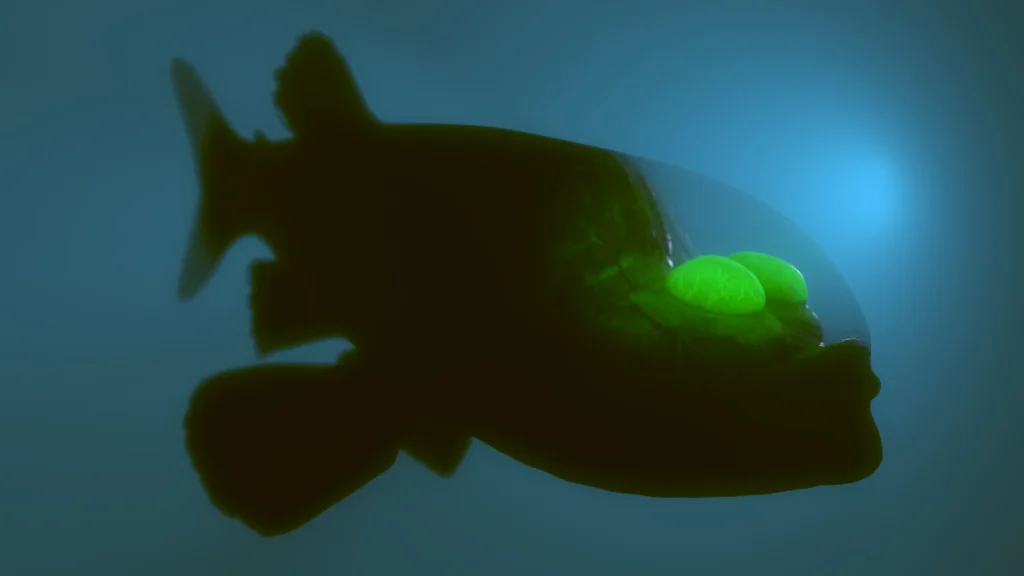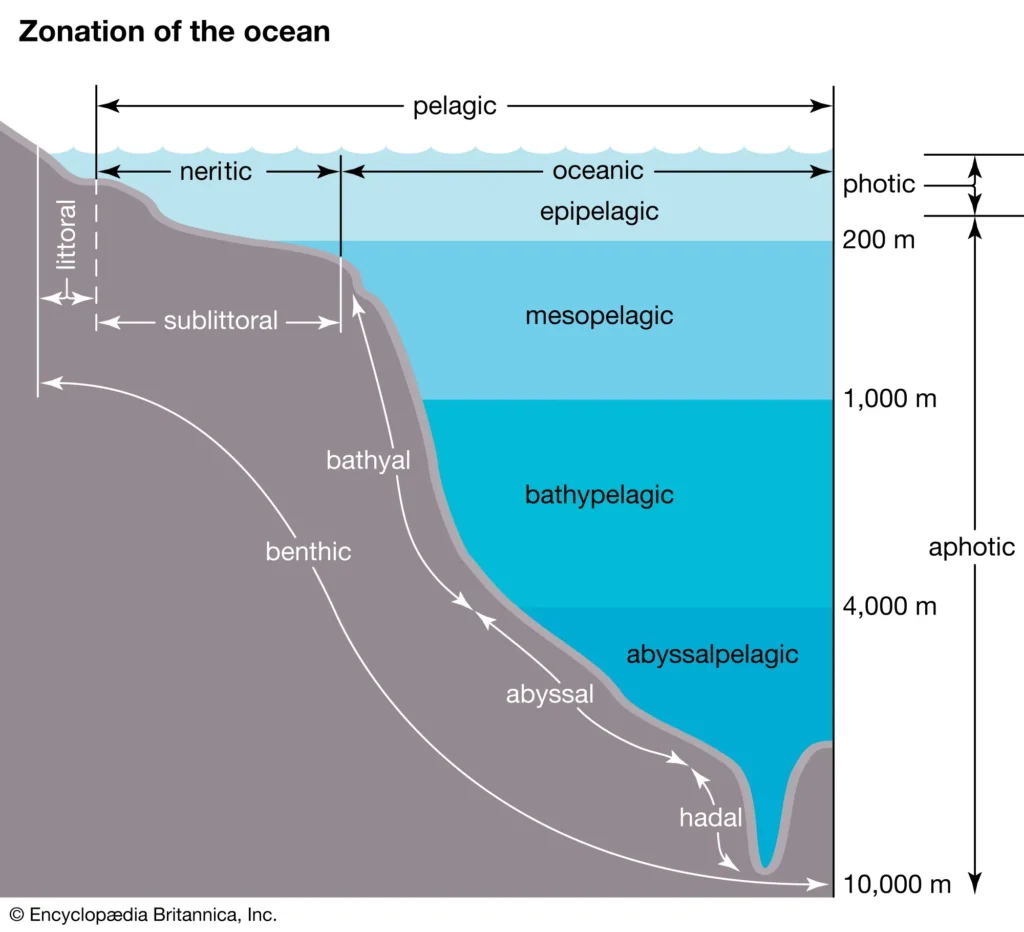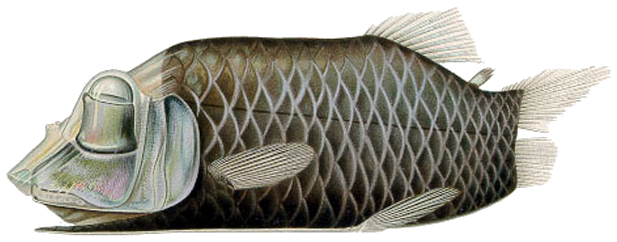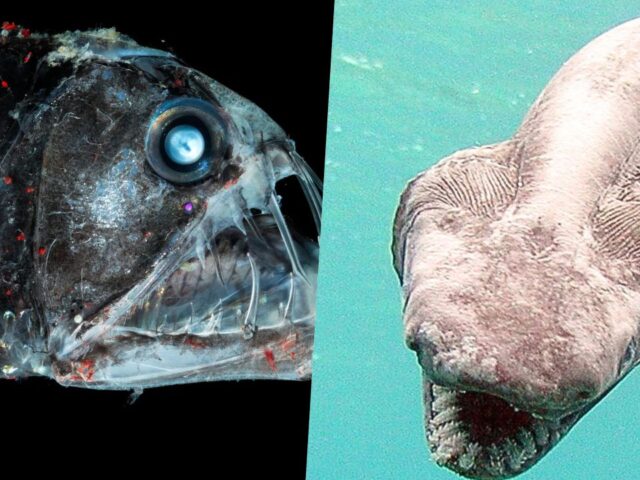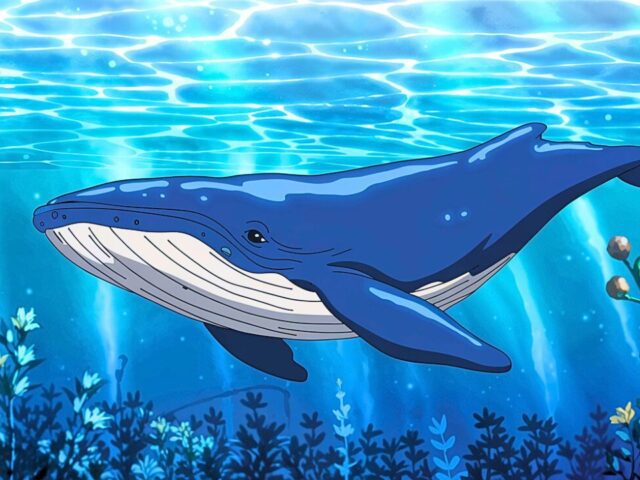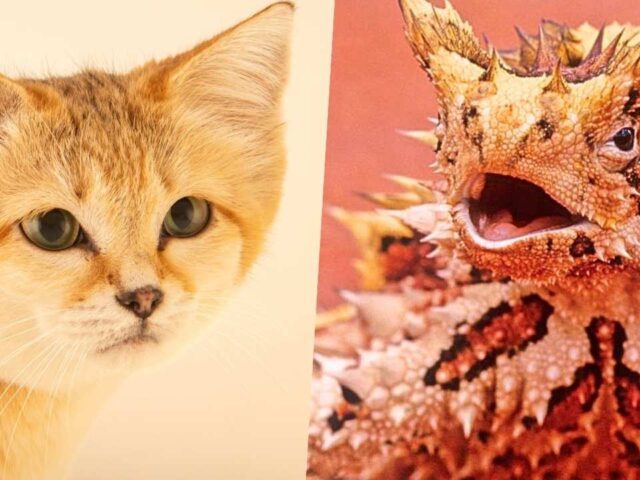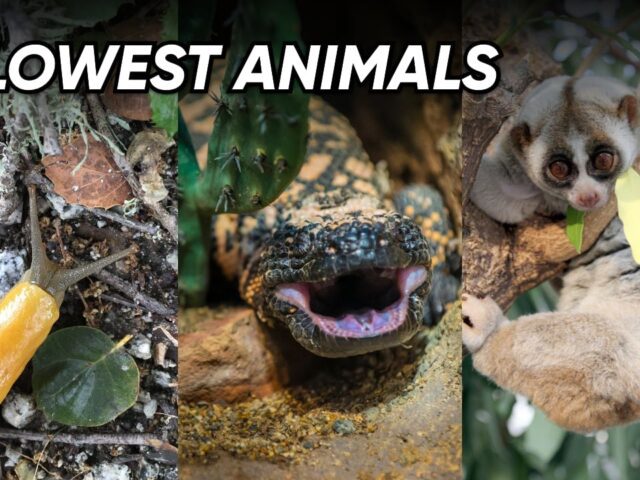The barreleye fish, scientifically known as Macropinna microstoma, is one of the most bizarre and fascinating creatures inhabiting the deep ocean.
This small fish, typically measuring around 6 inches in length, is renowned for its transparent, fluid-filled head that houses a pair of highly specialized eyes.
Found in the temperate waters of the Pacific, Atlantic, and Indian Oceans at depths between 2,000 to 2,600 feet, the barreleye fish has evolved remarkable adaptations to survive in its dark, high-pressure environment.
Table of Contents
- 1. Physical Characteristics of Barreleye Fish
- 2. Habitat and Distribution of Barreleye Fish
- 3. Diet and Feeding Behavior of Barreleye Fish
- 4. Adaptations for Deep-Sea Survival
- 5. Reproduction and Life Cycle of Barreleye Fish
- 6. Discovery and Scientific Research
- 7. Ecological Role and Importance of Barreleye Fish
- 8. Conservation Status
- 9. Future Research and Unanswered Questions
Physical Characteristics of Barreleye Fish
Transparent Head
The most striking feature of the barreleye fish is its transparent, dome-shaped head filled with a clear fluid. This unique adaptation allows the fish to collect more light in the dimly lit deep sea environment.
The transparent shield also protects the fish’s sensitive eyes from the stinging cells of siphonophores, jellyfish-like creatures that the barreleye may prey upon.
Tubular Eyes
Inside the transparent head are two green, barrel-shaped eyes that give the fish its name. These eyes are extremely sensitive to light and can rotate within the head, allowing the fish to look upward through its transparent dome or forward.
The green pigment in the eyes likely helps filter out sunlight from above, enhancing the fish’s ability to spot the bioluminescent glow of potential prey.
Body Structure of Barreleye Fish
Beyond its unique head, the barreleye fish has a relatively ordinary fish-like body. It is typically dark brown or black in color, which helps it blend into the darkness of the deep sea.
The fish has large, flat pectoral fins that allow it to hover motionless in the water, conserving energy while it waits for prey to pass overhead.
Habitat and Distribution of Barreleye Fish
Barreleye fish, also known as spook fish, inhabit the mesopelagic to bathypelagic zones of the ocean, typically at depths between 2,000 to 2,600 feet. They have been found in various locations across the Pacific Ocean, including:
- The Bering Sea
- Waters off the coast of Japan
- The California coast
- Baja California
Some populations have also been observed in the Atlantic and Indian Oceans[6]. These fish prefer areas where the water is extremely dark, as their specialized eyes are adapted for detecting the faintest traces of light.
Diet and Feeding Behavior of Barreleye Fish
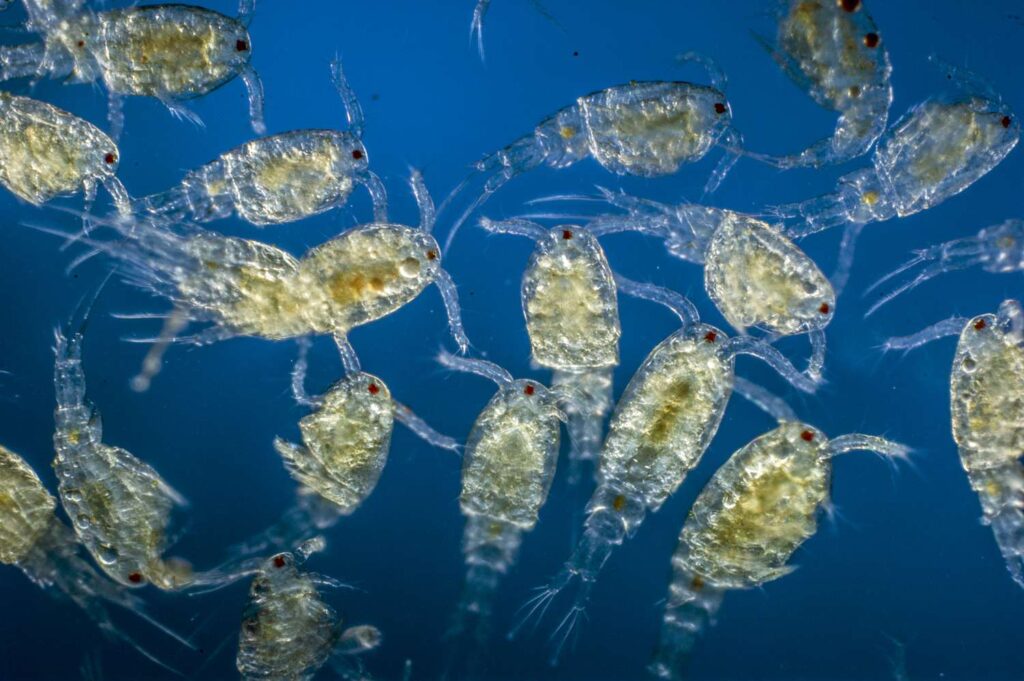
The diet of the barreleye fish primarily consists of small marine organisms, including:
- Zooplankton
- Small crustaceans
- Jellyfish
- Siphonophores
Researchers believe that barreleye fish may “steal” prey from the long, stinging tentacles of siphonophores. Their transparent head shield likely protects their eyes from the siphonophore’s stinging cells as they maneuver among the tentacles.
The barreleye’s feeding behavior is closely tied to its unique eye structure. The fish typically hovers motionless in the water with its body horizontal and eyes pointed upward.
When it spots potential prey, it rotates its eyes forward and swims upward to capture the food with its small, pointed mouth.
Adaptations for Deep-Sea Survival
Light Detection
The barreleye fish’s tubular eyes are highly specialized for detecting light in the dark depths. The green pigment in their eyes may help filter out sunlight from above, allowing the fish to spot the bioluminescent glow of prey against the darkness more easily.
Energy Conservation
Living in the deep sea where food is scarce, the barreleye fish has evolved to conserve energy. Its large, flat fins allow it to hover almost motionless in the water, expending minimal energy while waiting for prey to pass overhead.
Pressure Resistance
The barreleye fish’s body is adapted to withstand the immense pressure of the deep sea, which can be hundreds of times greater than the pressure at sea level. Its transparent head shield is filled with fluid, which helps equalize pressure and protect the delicate eye structures.
Reproduction and Life Cycle of Barreleye Fish
Very little is known about the reproduction and life cycle of barreleye fish due to the challenges of studying them in their natural habitat.
Scientists believe they are oviparous, meaning they lay eggs. The eggs and larvae are likely pelagic, floating near the surface until they hatch and gradually descend to deeper waters as they mature.
There is no known sexual dimorphism between males and females, and parental care is not believed to occur. The lifespan of barreleye fish in the wild is currently unknown.
Discovery and Scientific Research
The barreleye fish was first described in 1939 by William Chapman, but due to its deep-sea habitat, it remained poorly understood for decades. Most specimens brought to the surface were damaged by nets, destroying the delicate transparent head shield.
A breakthrough came in 2004 when researchers from the Monterey Bay Aquarium Research Institute (MBARI) observed a live barreleye fish in its natural habitat using a remotely operated vehicle (ROV).
This observation revealed for the first time that the fish’s eyes could rotate within its transparent head, a feature previously unknown to science.
In 2009, MBARI researchers Bruce Robison and Kim Reisenbichler published a paper detailing their observations of live barreleye fish, including the first intact specimens brought to the surface. Their work significantly advanced our understanding of this enigmatic species.
Ecological Role and Importance of Barreleye Fish
While the specific ecological role of barreleye fish is not fully understood, they likely play a part in the deep-sea food web as both predators and potential prey.
Their ability to detect and capture small organisms in the dark depths may help transfer energy between different layers of the ocean ecosystem.
The study of barreleye fish and their unique adaptations provides valuable insights into the diversity of life in the deep sea and the evolutionary processes that shape organisms in extreme environments.
Their specialized eyes and transparent heads offer inspiration for potential biomimetic applications in fields such as optics and materials science.
Conservation Status
The conservation status of barreleye fish is currently unknown due to limited data on their population sizes and distribution. Deep-sea ecosystems face various threats, including:
- Climate change and ocean acidification
- Deep-sea mining
- Pollution, particularly from plastics and chemical contaminants
- Overfishing, which can disrupt deep-sea food webs
While barreleye fish are not directly targeted by commercial fishing, they may be impacted by these broader threats to deep-sea ecosystems. More research is needed to assess their population status and potential conservation needs.
Future Research and Unanswered Questions
Despite recent advances in our understanding of barreleye fish, many questions remain unanswered. Some areas for future research include:
- Detailed studies of their life cycle and reproductive behavior
- Assessment of population sizes and distribution patterns
- Investigation of their sensory capabilities beyond vision
- Exploration of their role in deep-sea food webs
- Potential impacts of climate change and other human activities on their habitat
As technology for deep-sea exploration continues to improve, researchers hope to gain more insights into the biology and ecology of these fascinating creatures.
Sources:
- Marine Sanctuary Foundation. “Sea Wonder: Barreleye | Ocean Creatures | Marine Sanctuary.” National Marine Sanctuary Foundation, 31 Mar. 2023, marinesanctuary.org/blog/sea-wonder-barreleye.
- “Mystery Of Deep-sea Fish With Tubular Eyes And Transparent Head Solved.” ScienceDaily, 9 Feb. 2009, www.sciencedaily.com/releases/2009/02/090223150331.htm.
- Wagner, Hans-Joachim, et al. “Diversity and evolution of optically complex eyes in a family of deep-sea fish: Ocular diverticula in barreleye spookfish (Opisthoproctidae).” Frontiers in Ecology and Evolution, vol. 10, Dec. 2022, https://doi.org/10.3389/fevo.2022.1044565.

